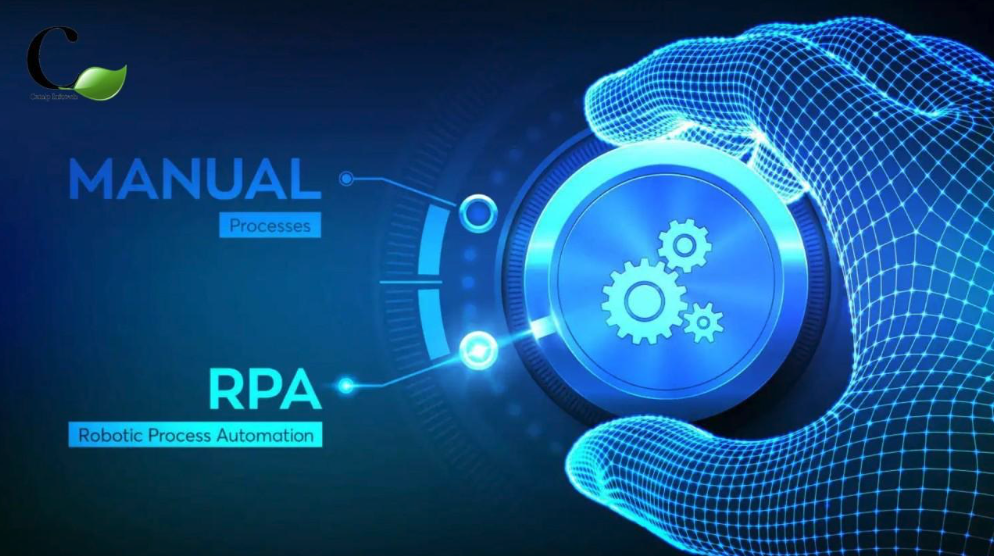Imagine a solution that boosts your productivity by up to 92% and improves compliance by up to 90%. Enter finance robotic process automation (RPA), a game-changer against laborious tasks like manual data processing. Financial institutions worldwide are embracing RPA technology for finance processing, accounting, and audit, revolutionizing business processes with its numerous benefits. It’s time for your company to join the RPA revolution!
RPA: What is it?
Robotic process automation, often referred to as smart automation or intelligent automation, involves advanced software designed to perform a series of tasks typically carried out by humans. RPA is particularly suitable for automating basic and rule-based tasks that are considered repetitive and mundane by experts.
Financial services automation systems have evolved to incorporate machine learning (ML), artificial intelligence (AI), and cognitive computing capabilities. For instance, a combination of RPA and AI can be used. AI processes the data and transforms it into a structured format that RPA tools can understand. According to Gartner, more than 80% of financial executives plan to incorporate or have already implemented RPA into their work processes. Let’s dig deeper into the unique aspects of RPA technology and how it enhances efficiency.
RPA for Data Management
Most companies find the financial department to be the area where they have to perform the most tedious work. Manual processes like reporting, account reconciliation, and transaction verification are often involved.
Take, for example, a bank that receives around 400 to 500 daily transaction requests in unstructured data format. An operations team relies on a master document with references to 20 sub-documents for processing each application. Additionally, every request is subject to 45 compliance checks to meet regulatory requirements. The volume of data that needs verification is enormous.
To enhance this process, the bank implemented RPA. They developed bots to capture data, ensure compliance, and provide traceability. As a result, the banking team’s productivity increased by 55%, and 5% of manual errors were eliminated by automating the process.
Robotic technology in banking can be effectively used for the following data-intensive processes:
- Extracting relevant general ledgers using RPA bots
- Preparing bank reconciliation statements in a predefined format
- Financial, regulatory, and statutory reporting
- Verifying the accuracy of payments by cross-checking documents
- Compiling payables listings
- Managing tax accounting and tax data.
The priority on banking automation is obvious, but not at the expense of security. Landline faxes are still common among financial technology (Fintech). There is a way to speed up the transfer of documents while maintaining the same level of security. For this, you need to fax from your iPhone. This application replaces fax, so just visit this link and install the application on your iPhone. The camera acts as a scanner, and the application creates your fax number so that you can receive documents quickly and securely.
Benefits of RPA Technology in Banking
Gartner reports that RPA bots are significantly cheaper than offshore or onshore specialists, costing only one-third or one-fifth of their salaries, respectively. Additionally, properly programmed RPA bots exhibit accurate and uninterrupted performance. These capabilities have caught the attention of organizations in various industries, including banking. Robotic process automation brings numerous benefits to retail banking, such as reducing human error and minimizing repetitive tasks. Some of the advantages of RPA in banking include:
- Fast implementation: Many RPA solutions offer drag-and-drop capabilities, making it effortless to automate banking processes with minimal coding.
- Zero infrastructure cost: RPA’s UI automation capabilities eliminate the need for essential infrastructure changes. In the case of cloud-based RPA, hardware and maintenance costs are further reduced.
- Compatibility with legacy data: RPA enables financial institutions to leverage both legacy and new data, bridging the gaps between various processes.
- Limited integration budget: Implementing RPA in the finance industry allows organizations to invest in a single platform instead of ensuring interoperability among multiple software solutions.
- Enhanced security: Dealing with a substantial volume of data can be both a blessing and a curse.
How to Choose the Right Banking Automation Software?
To select an appropriate RPA tool, you must consider your organization’s objectives and requirements. Additionally, we offer some guidelines to help you choose the right RPA solution.
- Prioritize user-friendliness. An RPA software should offer easily understandable features, clear graphics, seamless navigation, and flexible automation capabilities for basic processes.
- Focus on simplicity in bot setup. Provide multiple approaches so that both non-tech users and those with programming knowledge can set up bots.
- Finally, ensure the security of your RPA solution. RPA bots handle sensitive data and must be protected to prevent unauthorized access or data breaches.
Conclusion
We have reached the moment when machine learning in finance began to be used everywhere. We will soon see even greater adoption of AI in banking and those financial institutions that want to keep up with the times should pay attention to RPA. This saves costs and allows you to better understand customers, process their data and meet regulatory requirements.
This was a sponsored post.

